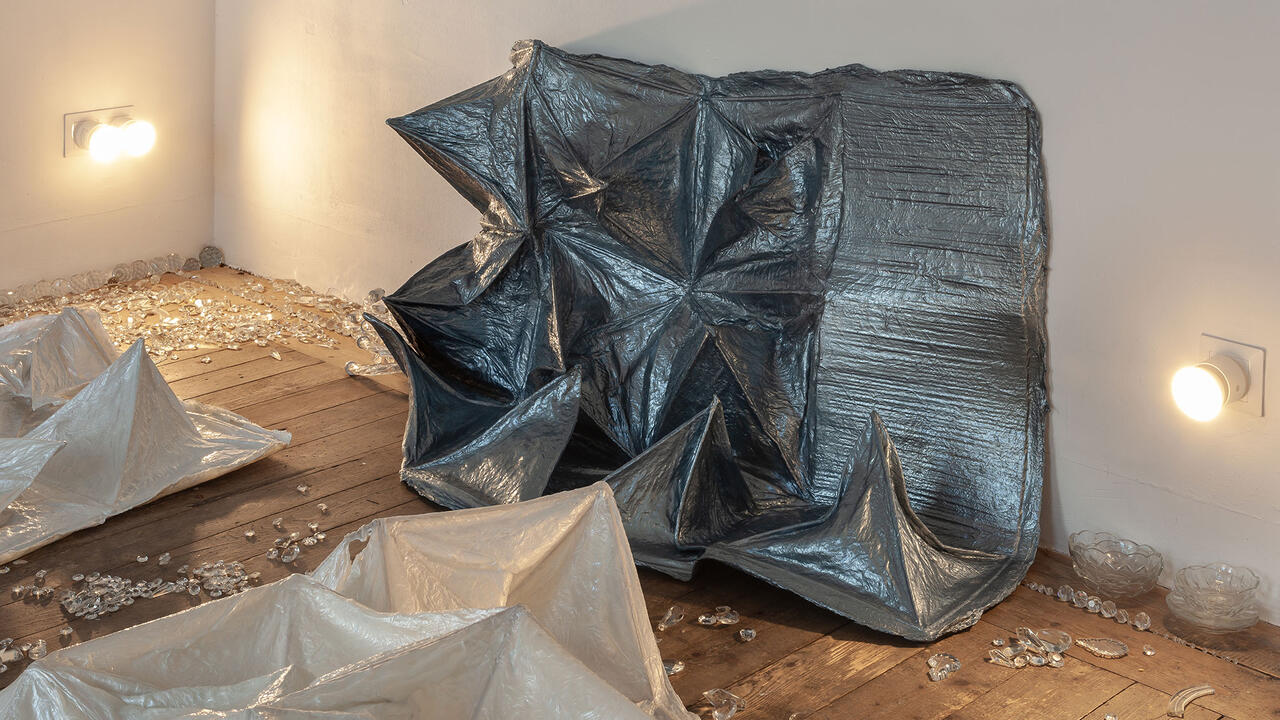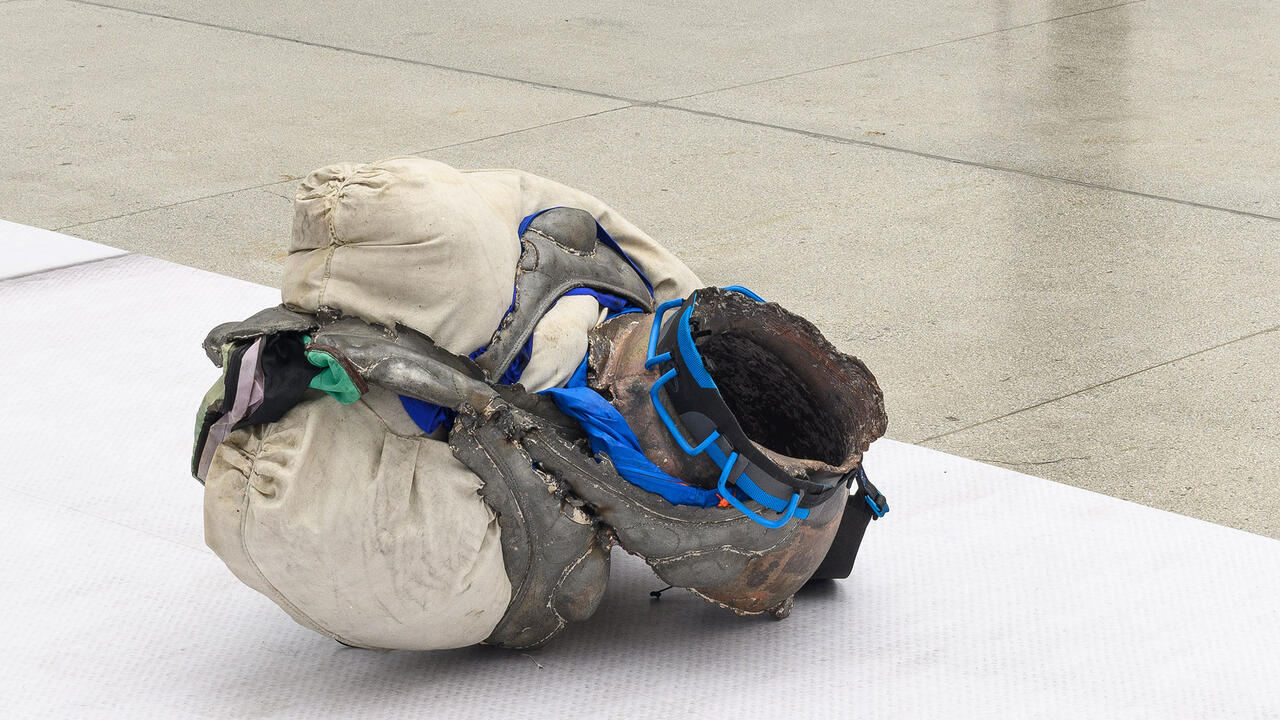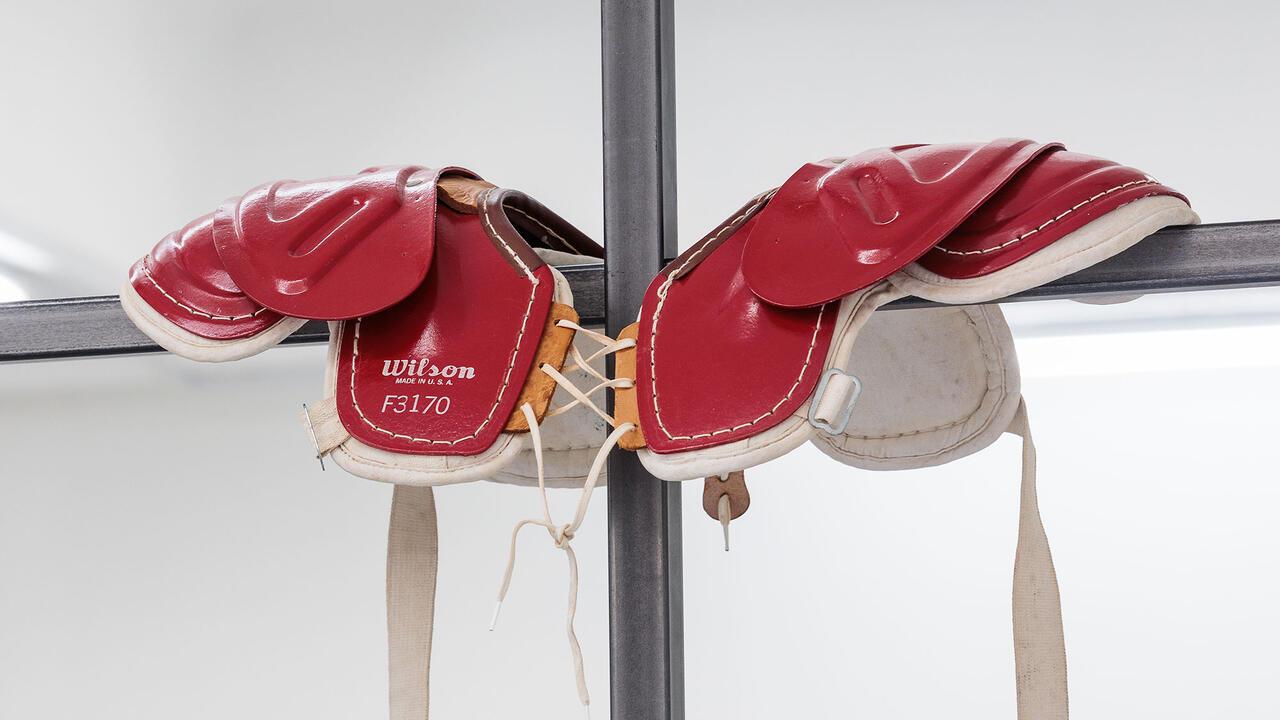Oliver Laric
Secession, Vienna, Austria
Secession, Vienna, Austria

Vienna is a city of monuments to its storied history, from its Roman ruins to the last Russian soldier of World War II. Its urban fabric reminds you of its heyday as empire confronted with modernity, even as today it enters – like the rest of the world – a bionic, technological and robotic revolution full tilt. For his very ‘today’ exhibition ‘Photoplastik’ at Vienna’s Secession, Berlin-based artist Oliver Laric opted to begin in the slipstream of yesteryear. Laric’s research in the Kunsthistorisches Museum, the Albertina, and the University of Vienna’s Institute for Classical Archeology served as the basis for new sculptures, all dated 2016.
While conducting research for ‘Photoplastik’, Laric discovered that in 1860 the French sculptor and photographer Francois Willème patented a device for the mechanical production of three-dimensional portraits, made using 24 cameras placed around the sitter in a circle. Such sculptures were cheap and quick to produce in multiples; a soon-booming industry was born. Touring Europe with his invention Willème eventually found his way to Vienna. Laric found examples of these photo-derived 19th-century sculptures in the Albertina, which then became a series of three-dimensional prints. The homage – in synthetic polyamide – to the Frenchman, François Willème, Self Portrait, around 1860, shows a quartet of figures scaled down to pedestal size in large, medium, small and extra small formats.

Meanwhile, Max Klinger: Beethoven, 1902 – at a height of 2,66 metres Laric’s largest work to date – is a 3D reproduction of a Beethoven portrait by Max Klinger originally made from marble, alabaster, amber, bronze, and ivory, and which took Klinger fifteen years to make before it was installed in the Secession’s 14th exhibition of 1902, along with Klimt’s Beethoven Frieze (1901). In Laric’s version, past and present eerily dovetail with information-age rupture; the sculpture’s bulky size belies its lightweight hollow core, and from a distance the all-white resin suggests the marble of Greco Roman antiquity. Assembled from 25 prefab components, the joining seams are clearly visible to break the illusionism of a solid mass. Copyright issues surrounded the production for Laric’s copy in the Secession. The Museum der bildenden Künste Leipzig (where it’s on permanent display and where Klinger was born) denied permission to photo document the work. Thus a friend of Laric’s surreptitiously took 300 or so photos, which were then painstakingly composited into the Klinger 3D print in Vienna, imperfections and all.
Laric’s efforts behind such works are time- and research-intensive: from the moment he locates and opens the archives, to the labour of concisely assembling the photos and translating that information into 3-dimensional scans and ultimately prints. Layers of data such as provenance, original material, institutional copyrights and ultimately precise photographic scanning and reproduction, are the ingredients for a recipe that turns into elaborate 3D scans. They are then 3D printed in piecemeal components and assembled on site. Laric is a sleuth and forensic scientist rolled into one, going to elaborate lengths to show that copy and original are interchangeable sets of data – each containing variations of variations, akin to music. After all, the hand of the sculptor is replaced by machine and software specifications and the information of how to do so freely passed along. No two copies can ever be the same, though the knowledge gets relayed in a different format. Perhaps this is how cultural artefacts will survive another thousand years.

‘Photoplastik’ bridges a weird netherworld between the flatness of the photo and the instantly gratifying material girth of 3D printing technology. Scattered throughout the 18 sculptures are references to antiquity, and to Neo-Classical copies of Roman copies of Greek antiquity or nineteenth-century naturalist studies. Charming mother and child sculptures based on modern mid-century sculptures are scaled down just so. A single copper relief mask features the celebrity faces of a dozen contemporary actors and actresses, solely from photo sources (Lebendmasken, Living Masks). Gone is the romance of the auratic in these objects. In its place is a romance with information as content, ghosts in the machine – materially present or not.
Where hot-button copyright is concerned Laric revels in the grey zone of the legal system on any continent and – with downloadable scans, concurrently presented on threedscans.com – the open-source ethos of Internet culture. Exploiting loopholes, it’s an ingenious Byzantine system he’s marked out for himself, encrypting the underlying structural dynamics and the recurrent archetypes of our debauched civilization. Bringing a logician’s clarity to the murky semantics of legal versus illegal, original versus copy, the sculptures themselves are the evanescent artefacts embedded in the timeline of tomorrow.




















